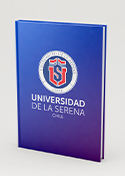Ciencias Naturales
Permanent URI for this community
Browse
Browsing Ciencias Naturales by Subject "binaries: spectroscopic"
Fundamental parameters of two O9-type giant stars: the (former) spectral classification standard HD 93249 A and ALS 12502 A
(MONTHLY NOTICES OF THE ROYAL ASTRONOMICAL SOCIETY, 2023-09-07) Ansín, T.; Gamen, R.; Morrell, N.; Barbá, R. H.; Apellániz, J. M.; Arias, J.; Simón-Díaz, S.; Holgado, G.
The evolution of massive stars is not completely understood. Several phenomena affect their birth, life, and death, multiplicity being one of them. In this context, the OWN and MONOS projects are systematically observing O- and WN-type stars whose multiplicity status is unknown. Their major goal considers the necessity of determining absolute parameters of massive stars. We have collected spectra of HD 93249 A and ALS 12502 A aiming at characterizing their binary nature. For both stars, we analysed high-resolution spectra and combined them with Transiting Exoplanet Survey Satellite (TESS) observations to be compared with binary models constructed by means of the phoebe code. We discovered that the radial velocity of HD 93249 A varies with a period of 2.97968 +/- 0.00001 d and that the system presents ellipsoidal light variations. We disentangled the composite spectra and classified its components as O9 III and B1.5 III, respectively. Confirmed as a spectroscopic binary, HD 93249 A can no longer be used as spectral classification standard. ALS 12502 A turned out to be a detached eclipsing binary in the TESS and Gaia data. These results enable us to determine absolute parameters for each component in the system.
The spectroscopic orbit of HD 168112 A,B in NGC 6604: another massive binary target for interferometry
(MONTHLY NOTICES OF THE ROYAL ASTRONOMICAL SOCIETY, 2023-09-11) Putkuri, C.; Gamen, R.; Morrell, N.; Apellániz, J. M.; Arias, J.; Simón-Díaz, S.; Ferrero, G. A.; Rodríguez, C. N.; Sota, A.; Benvenuto, O. G.; Barbá, R. H.
We present the first spectroscopic orbit of the O-type double-lined star HD 168112 A,B. We analyse 101 high-resolution optical spectra identifying the absorption lines of both components. The orbital solution presents a relatively long period, P = 513.52 +/- 0.01 d, and a high eccentricity, e = 0.743 +/- 0.005. The binary system consists of two very similar stars of minimum masses of similar to 25 M-circle dot, effective temperatures of similar to 40 000 K, and surface gravities of similar to 3.7 dex. The system has a minimum semimajor axis a sin i similar to 1000 R-circle dot. We confirm that the A and B visual components identified via interferometry do correspond to the spectroscopic ones. We also analyse the underlying stellar groups using Gaia DR3 data and ground-based spectroscopy as part of the Villafranca project, determining that NGC 6604 is at a distance of 1942(-36)(+38) pc and giving spectral classifications for 23 massive stellar systems in Villafranca O-035 and the surrounding Ser OB2 association, for which we provide the most complete census of massive stars to date.
